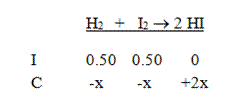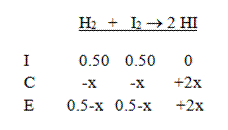Even with scientific notation, very large numbers and very small numbers can be awkward to work with. That is why scientists have developed a set of standard prefixes that are attached to a unit to indicate multiples of that unit. Each of the prefixes represents a particular power of ten. There are currently 24 prefixes in use:
Prefixes greater than 1
|
Factor |
Name |
symbol |
|
1030 |
quetta |
Q |
|
1027 |
ronna |
R |
|
1024 |
yotta |
Y |
|
1021 |
zetta |
Z |
|
1018 |
exa |
E |
|
1015 |
peta |
P |
|
1012 |
tera |
T |
|
109 |
giga |
G |
|
106 |
mega |
M |
|
103 |
kilo |
k |
|
102 |
hecto |
h |
|
101 |
deka |
da |
Prefixes less than 1
|
Factor |
Name |
symbol |
|
10-1 |
deci |
d |
|
10-2 |
centi |
c |
|
10-3 |
milli |
m |
|
10-6 |
micro |
μ |
|
10-9 |
nano |
n |
|
10-12 |
pico |
p |
|
10-15 |
femto |
f |
|
10-18 |
atto |
a |
|
10-21 |
zepto |
z |
|
10-24 |
yocto |
y |
|
10-27 |
ronto |
r |
|
10-30 |
quecto |
q |
Do you have to memorize all of these? No. If you are a high school chemistry or physics student, you should know the prefixes in blue above. If you are an AP chemistry or AP physics student, you should also learn the prefixes in red. If you plan to be a scientist or an engineer, it wouldn’t hurt you to learn the rest, but the extreme prefixes are not so common.
Why do the prefixes skip three powers of 10? This allows us to use numbers that are always between 1 and 999. This is easiest to explain with an example. Let’s say we are measuring very small electrical currents. The following table shows how we would state the values without scientific notation, with scientific notation, and with prefixes. You can see how convenient this prefix method is:
| Current | Scientific notation | Prefix notation |
| 0.50 A | 5.0 x 10-1 A | 500 mA |
| 0.050 A | 5.0 x 10-2 A | 50 mA |
| 0.0050 A | 5.0 x 10-3 A | 5 mA |
| 0.00050 A | 5.0 x 10-4 A | 500 μA |
| 0.000050 A | 5.0 x 10-5 A | 50 μA |
| 0.0000050 A | 5.0 x 10-6 A | 5 μA |
| 0.00000050 A | 5.0 x 10-7 A | 500 nA |
| 0.000000050 A | 5.0 x 10-8 A | 50 nA |
| 0.0000000050 A | 5.0 x 10-9 A | 5 nA |
| 0.00000000050 A | 5.0 x 10-10 A | 500 pA |




